- About the Company
- Scope of activities
- MISSION
- Authorities
- Contact
Fleets
BUSES
Autosan M12LF (SANCITY 12LF)
Number - 53 units.
Autosan Sancity 12LF – low-floor city buses of maxi class, serially manufactured since 2010 by the “Autosan” company in Sanok. They are part of the module family of M1xLx code designation. Target sales plans amount to 70 - 100 units annually and to 20 - 30 units in the first year of manufacture. The prototype of the Autosan Sancity 12LF model, with the internal marking of the Autosan M12LF manufacturer, originally meant to bear the trade name Autosan M12LF Sancity, came into being in the first half of 2010, based on the formerly-developed low-entry Autosan M12LE Sancity model. It was first presented to the public on 20 May 2010 at the SilesiaKOMUNIKACJA trade fair in Sosnowiec. The vehicle construction is based on a truss frame interoperating with a body frame built of tubes of square and rectangular cross-section joined by means of welding. The whole body frame is made of weathered steel. External side panels are made of aluminium sheet metal and plastic, attached to the frame. The front wall, rear wall, and the roof are made of plastic, and the side covers are made of aluminium. The side walls and the ceiling inside the vehicle, designed to transport, depending on the configuration, 96-110 passengers, including 27-41 on Kiel Ideo, or Ster Motyl seat types, are finished with laminated boards. The floor is covered with non-skid lining. Initially it had an Iveco Cursor 78 EEV motor of 213 kW (290 KM) maximum power at 2000 rpm and maximum torque 1100 Nm at 1080 rpm. The power transmission unit interoperates with Voith Diwa5 or ZF Ecolife automatic gearboxes blocked with a retarder. The running gear components are a ZF RL 75EC front axle suspended independently and a rear portal bridge ZF AV 132/80[4]. It is also equipped with an Electronically Controlled Air Suspension (ECAS) system which allows the kneeling of the bus. The vehicle’s electrical installation is based on a CAN rail, and all functions are controlled by a KIBES 32 on-board computer. At the consignee’s request, an automatic fire extinguishing system in its engine compartment, and a passenger-counting system, can be installed in the vehicle
 |
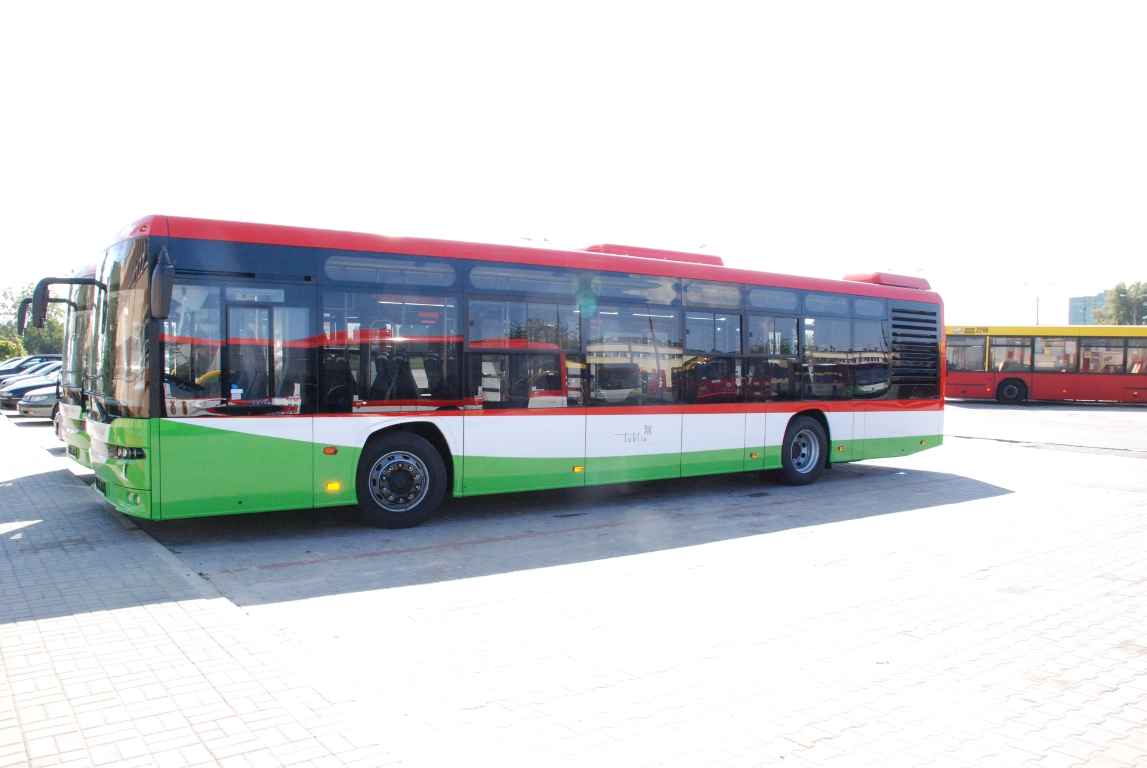 |
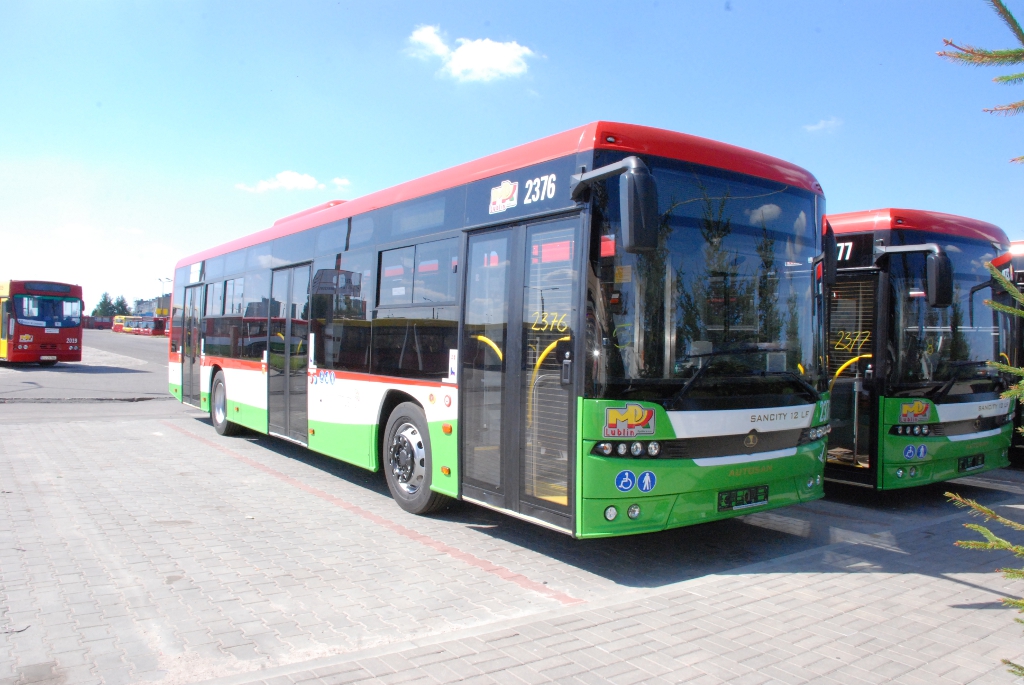 |
Cacciamali Iveco 65C Urbanino
Number - 2 units.
Midibuses are a category of vehicles that were first seen in the early 1980s. Initially, they were treated with a dose of scepticism. It was not until the late 1980s that it turned out that at the city peripheries high-capacity buses were not fully utilised and their operating costs were higher than those of a midibus. This bus, 7.78 metres long, is manufactured by the Italian company “Cacciamali”, which installs it on an Iveco 65 chassis. All the components are assembled in “Kapena”, Słupsk. The vehicle is equipped with a 4-cylinder engine with a 2.8 l capacity and 107 kW engine power. In 2002 MPK Lublin issued a call for tenders for the supply of 10 - 15 midibuses. Two companies – Jelcz and Kapena – answered the tender and the latter company won. It supplied the first two buses as early as in January, and the remaining buses were delivered by the end of February. The first five midibuses were equipped with spring suspension, the remaining units with air suspension. They arrived in Lublin painted in yellow-red-and-green squares.
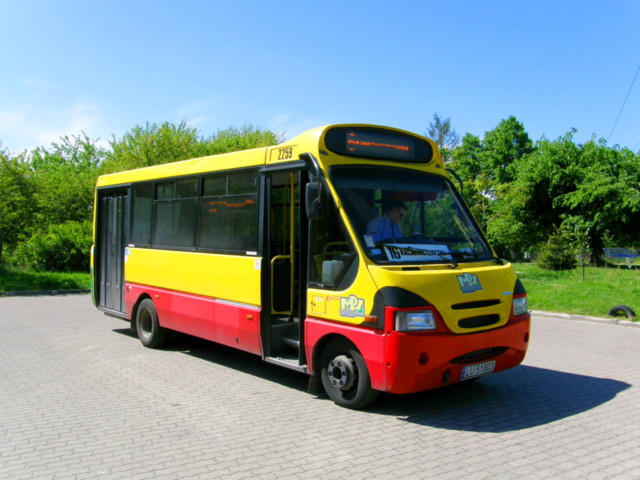 |
 |
 |
Ikarus 280.26
Number - 1 units.
Ikarus is a company which solely manufactures buses. The company’s head office and its production facilities are located in Budapest, Hungary. It is currently a part of the Irisbus corporation. Production began in 1972 and stopped in 2002. In Lublin, the IKARUS 280.26 is the only bus – and the most popular one – from the Budapest manufacturer. Almost all the vehicles were purchased directly from the manufacturer, although some of them were bought as used. Ikarus buses were bought in two groups. The first supply was between 1982 and 1985, the second one in 1989. The vehicles, which are still in use in Lublin, have undergone many thorough overhauls. The frames were partly or completely replaced, the engines were repaired. The numerous changes in MPK brand colours and the advertisements covering the bodies, required the buses to be airbrushed with different colours. They were supplied from the manufacturer as painted cream-and-red, and at present one can come across red ones. Residents of Lublin had 122 buses of this type at their disposal.
 |
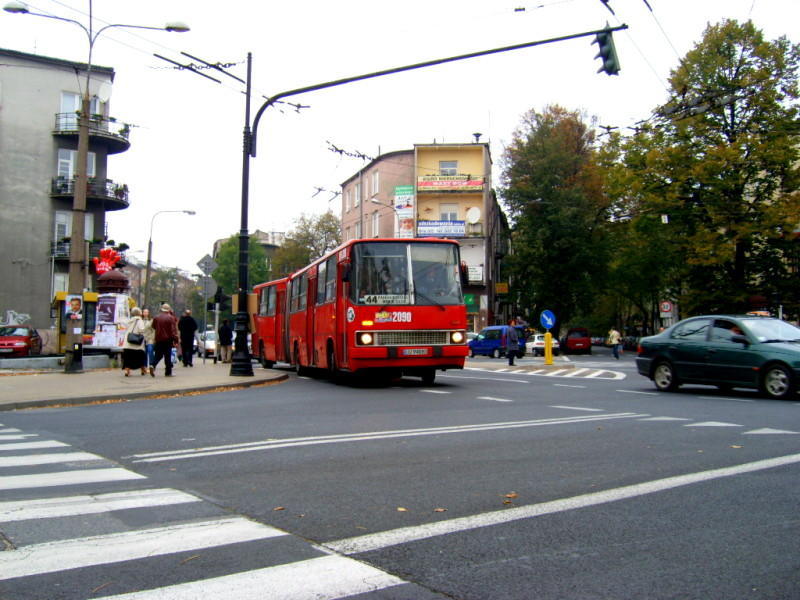 |
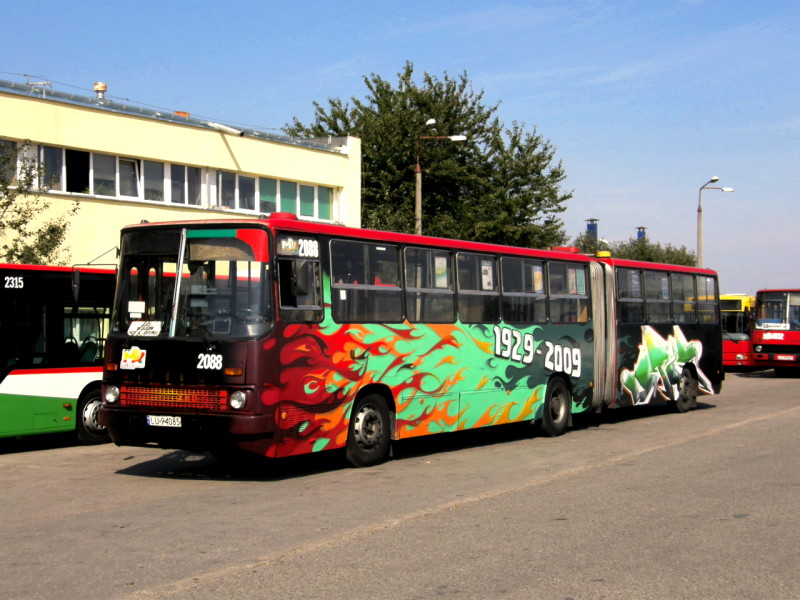 |
Jelcz 120M/3
Number - 2 units.
Jelcz 120M/3 is a bus which was formerly manufactured by Jelcz. The model became another variant of the 120M family. Its manufacture was launched in 1999. It was then that its body underwent the second modernisation when a new front wall with a wrap-around windscreen was installed. The bus was equipped with an engine manufactured in Poland that meets the Euro-II emission standard, a 220 HP diesel engine WS Mielec SWT 11/302/1. Since 2000 this model, similarly to all Jelcz models, has been manufactured with the use of stainless steel and this is why its service life has lengthened from 10-12 to 18-20 years. Manufacture stopped in 2004.
 |
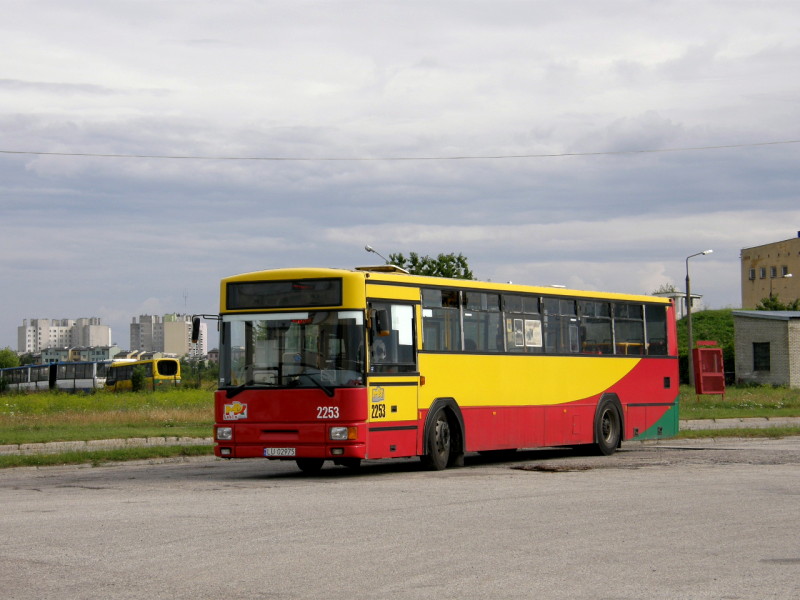 |
 |
Jelcz 120MM/2
Number - 2 units.
Jelcz 120MM/2 is another bus of the 120M family; a vehicle manufactured by Jelcz, the Polish company. Its appearance does not differ in any aspect from its predecessor. The only thing that differs between these two models is the German-made MAN D0826 LUH12 engine that meets the Euro-II emission standard. Its premiere took place in 1998. Starting from that time the model entered serial production which stopped in 2003.
 |
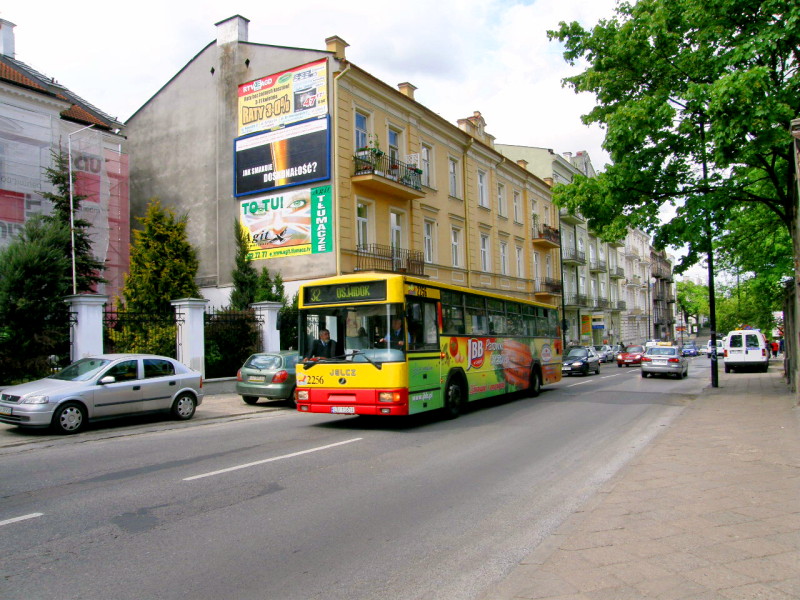 |
 |
Jelcz M11
Number - 5 units.
Jelcz M11 buses, similarly to Jelcz L11 buses, were manufactured by Jelcz Vehicle Manufacturing Plant. Their production started in 1985 and stopped five years later, that is in 1990. Model M11 became the most original Jelcz invention. It came into being as a combination of an Ikarus 260 chassis (and its mechanics) and a Jelcz PR110 body. This project was introduced and carried out in the period of a complete economic chaos. Initially, these buses were praised for their better adaptability to the Polish road conditions. In the following years, a drawback – poor corrosion protection – was revealed.
 |
 |
 |
Jelcz M121M
Number - 25 units.
Jelcz M121M buses are the most popular buses manufactured in Poland that can be most frequently seen in city public transport companies owing to their low purchase price. Their manufacture started in 1995 from the initial version, which was a successor of Jelcz 120M. It differed from 120M only in internal appearance of its front part where the floor was low, and in the removal of double seats (single ones were left) on the left side of the bus. It was also the first time when an open driver’s cab was used. In 1996 the manufacture of version “I” started. In its appearance, the model did not resemble the earlier version at all. The external design of the vehicle was completely reworked but the inside was left almost untouched. The steps on which there were seats were removed from the front part and large inner wheel arches were installed, inside of which large fuel tanks were installed; this makes the interior of the vehicle seem cramped and uncomfortable for passengers. The next year brought another version. Manufacture of version II started in early 1997. It was only the vehicle capacity that was different, and what caused this change was adding a seat in the front row on the right, next to the second door. These models were manufactured for two years. In 1999 another – the third – version came into being. It referred back to version I, only the inner wheel arch changed, into which seats were fitted on its both sides (single seats at the front, one-and-a-half seats at the back).
 |
 |
 |
Jelcz M121MB
Number - 1 unit.
Jelcz M121MB, as its name suggests, was manufactured by Jelcz. The prototype of this first low-floor vehicle manufactured in Poland came into being in 1994 and was the successor of Jelcz 120M. Serial production started in 1995. This model is in its 60% a low-floor bus manufactured by connecting the new front part, up to the second door, to the back of Jelcz 120M. The last letter, “B”, in the name of the model meant that it was equipped with a Mercedes-Benz power transmission unit.
 |
Jelcz M181M
Number - 1 unit.
Jelcz M181M was manufactured in 1997 on the basis of its predecessor, Jelcz M181MB. The elements which are different from the previous version include the vehicle’s front and rear walls, and its irregular row of windows. These are the most important changes visible at first sight. An imperceptible change, which nevertheless influenced even the name of the model, is its power transmission unit. The bus is equipped with a MAN engine and it is a lengthened version of model M121M.
 |
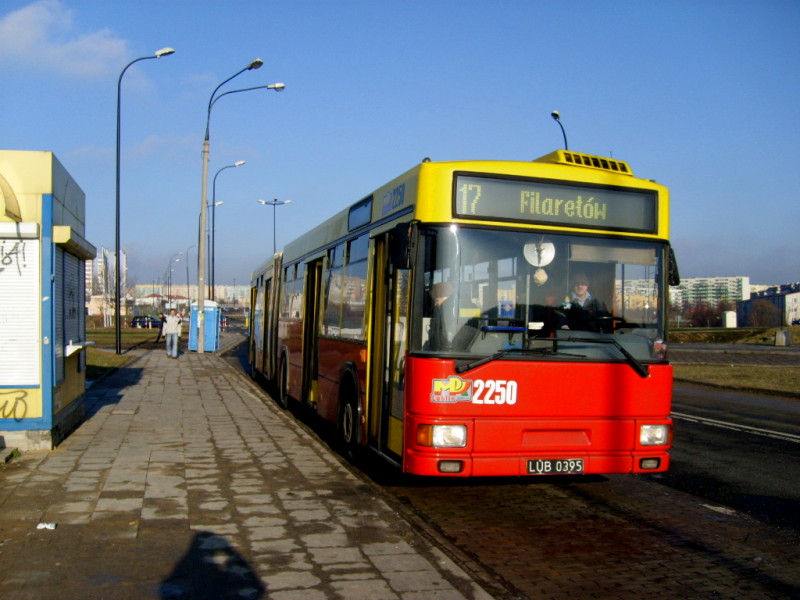 |
Jelcz M181M/1
Number - 1 units.
Jelcz M181M/1, was started in 1999 as a successor of model M181M. It was produced in Jelcz motor vehicle manufacturing plant. The model insignificantly differs from its predecessor. The visible change that can be seen is inside the vehicle – single seats installed on the inner wheel arch in part B of the vehicle. The engines that were installed were the same as in the earlier version – 260 HP MAN engines.
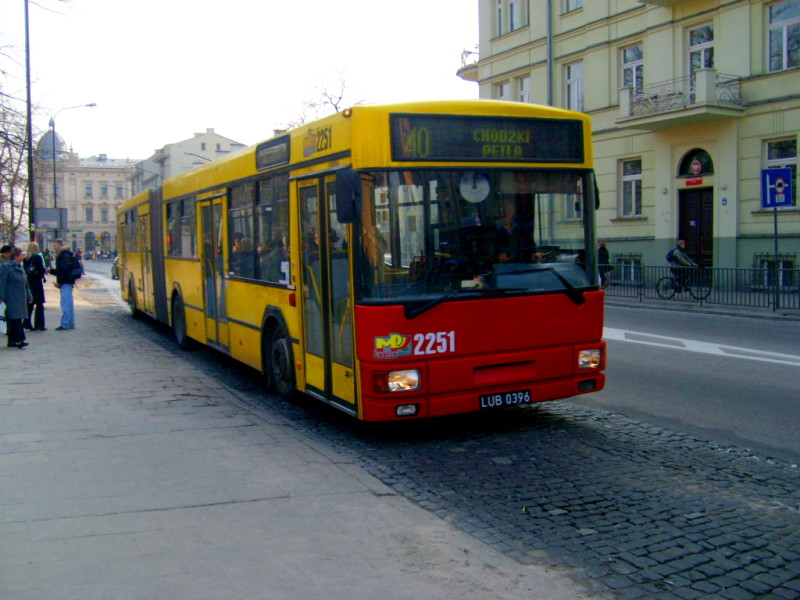 |
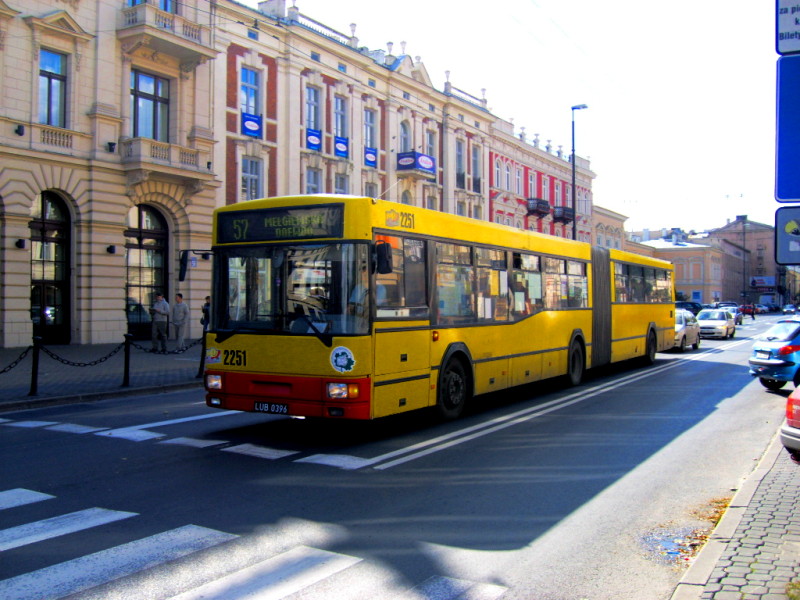 |
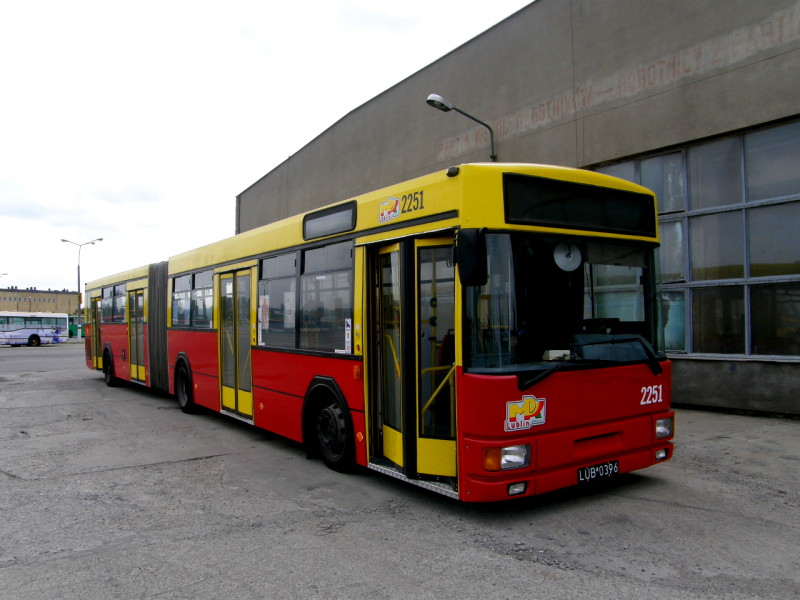 |
Mercedes-Benz 628 O 530 G CITARO
Number - 27 units.
Mercedes-Benz Citaro G (the letter “G” means Gelenkbus – articulated version). The premiere of Citaro took place in 1997 during a conference of the International Association of Public Transport in Frankfurt and since that time it has been manufactured in the main plant of the concern in Mannheim. Citaro replaced on the production line the formerly very popular model O 405. After manufacturing the total of 15 thousand Citaro first generation city buses, a modernised second generation model of the bus was presented to the public in 2006. The introduced construction changes were first of all applied to its power transmission unit, suspension, and steering system. The front wall design was slightly changed by introducing a rib between the headlights. At the back of the bus, a new V-shaped window-pane (an utterly new shape) was inserted. The lamps were also changed. The renewed Mercedes Citaro was a great success – in 2007 alone, more than 3200 units were sold, and in 2008 the total production of the model, counting from the moment when manufacture started, exceeded 20 thousand units. The modernised Citaro was granted the prestigious title "Bus of the Year 2007".
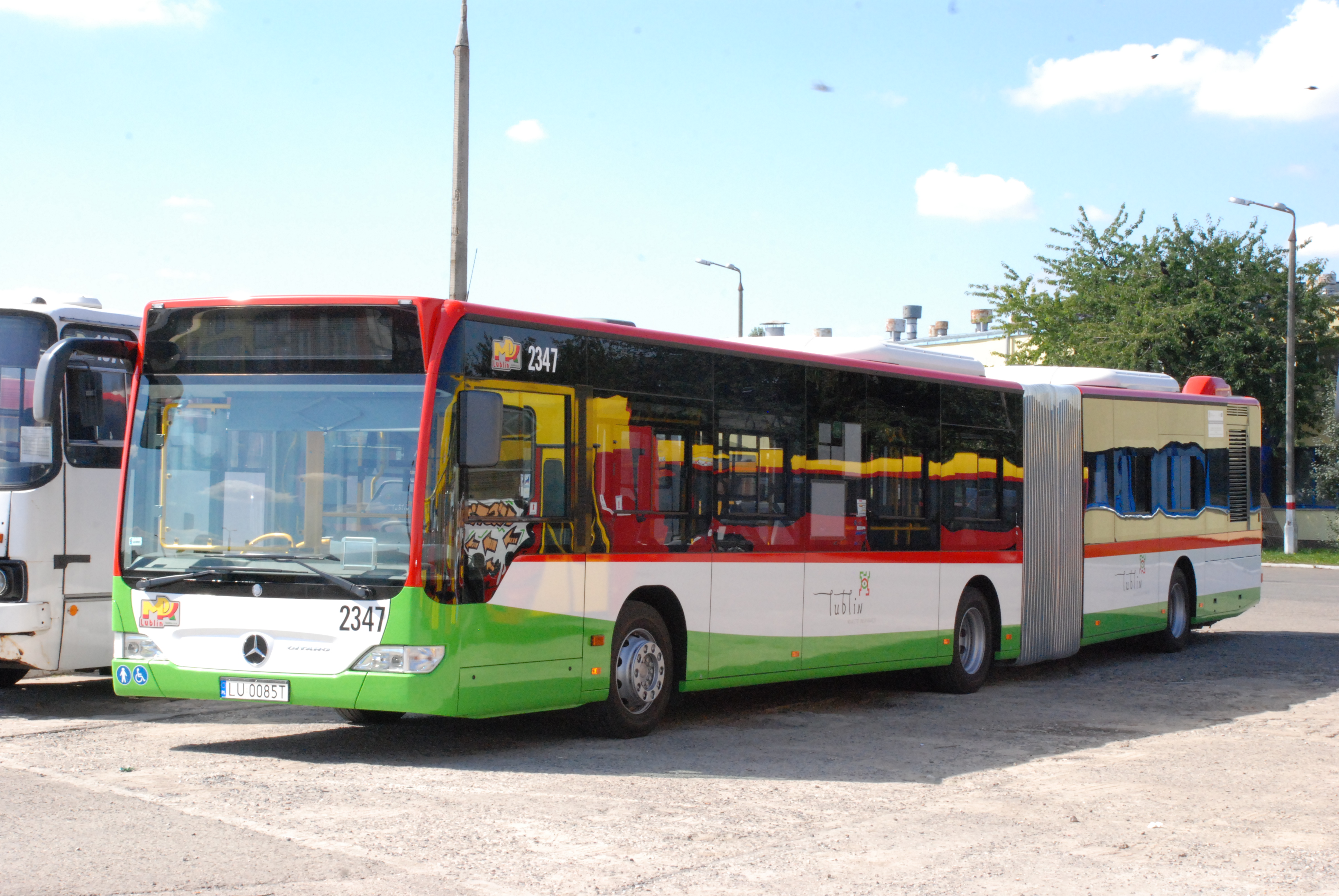 |
Mercedes-Benz 628 Conecto LF
Number - 22 units.
The manufacture of Mercedes-Benz 628 Conecto LF started in 2007 in a plant located in Turkey. In comparison to Citaro, it is not so well-equipped, which reduces its price considerably. These buses are meant for the regions of Central and Eastern Europe. Its standard does not fail to meet the present-day requirements. Entirely low-floor, equipped with an asymmetrically placed engine installed in a tower column in the rear part – complying with Euro 5 emission standard. Its body design is highly impressive – its side walls include a highly-placed row of windows. The manufacturer guarantees 15 years of service life before the first overhaul. The driver’s cab is made of plastic walls and has tinted windows.
 |
 |
 |
Mercedes-Benz 628 Conecto G
Number - 10 units.
Manufacture of Mercedes-Benz 628 Conecto G started in 2007 in a plant located in Turkey. These buses are equipped with OM 457 LA.V engines of 11 967 dm3 capacity that comply with Euro 5 emission standard.
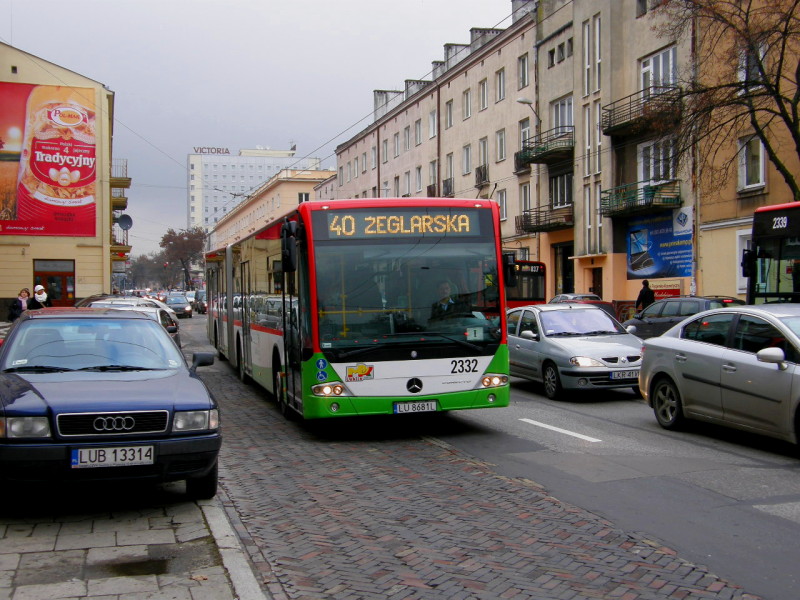 |
 |
 |
Mercedes-Benz O 405 N
Number - 15 units.
Mercedes-Benz O 405 N is a city bus manufactured by the German Mercedes. This model is a quite popular low-floor bus both in its homeland – Germany – and in other European countries. Its production started at the turn of the 1980s and 1990s. The buses are equipped with an OM 447 hLA Mercedes-Benz engine which complies with Euro II emission standard. Its interior differs considerably from buses prevalent in Poland. Along its left side there is a double row of seats. At the front, on the right side, four collapsible seats have been installed between the front inner wheel arch and the second door. This arrangement allows to increase the number of standing room when the bus is crowded. In the front part of the bus the floor is completely low. Behind the second door there is a low step. The front and back doors open inwards, and the middle doors open outwards (so-called recoilers).
 |
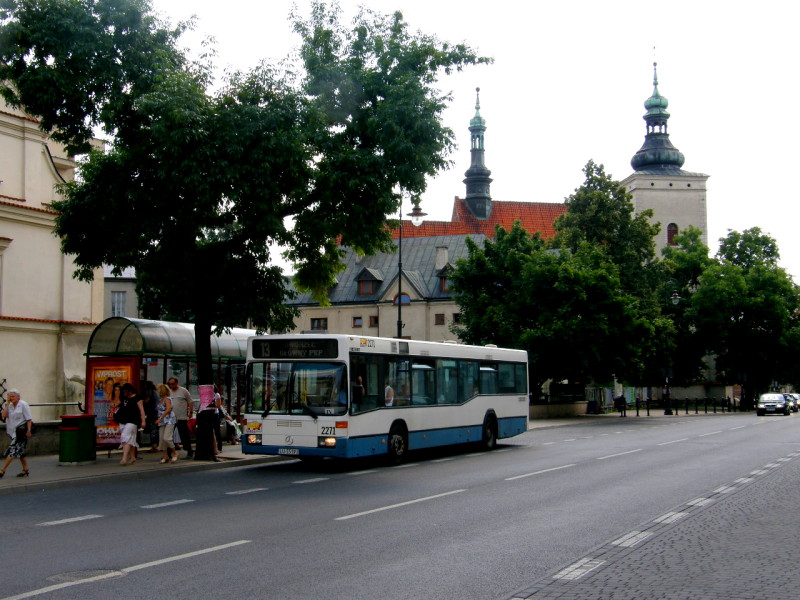 |
 |
Mercedes-Benz O 405 N (CNG)
Number - 2 units.
Mercedes-Benz O 405 N (CNG) are second-hand buses rented by MPK Lublin in 2007, at which time the city transport company wanted to buy vehicles powered by compressed natural gas. Due to their poor technical condition, the buses transported passengers for less than a year.
 |
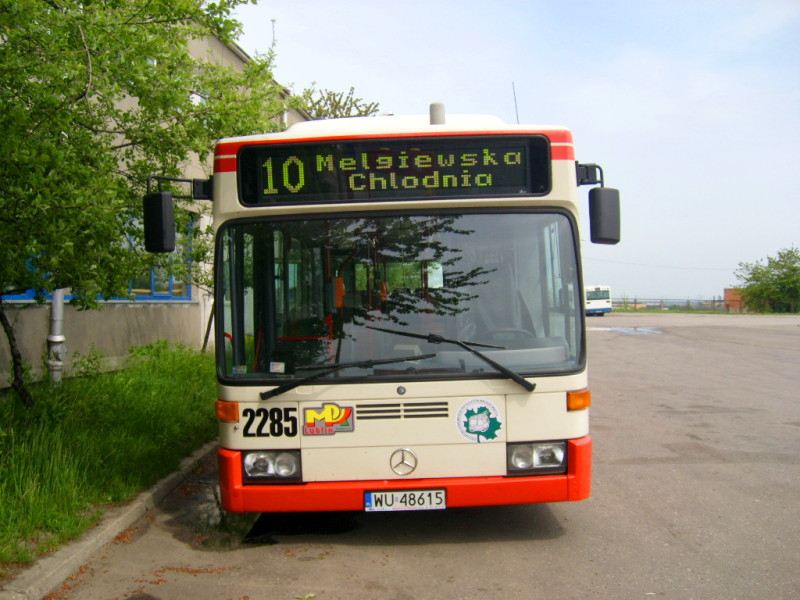 |
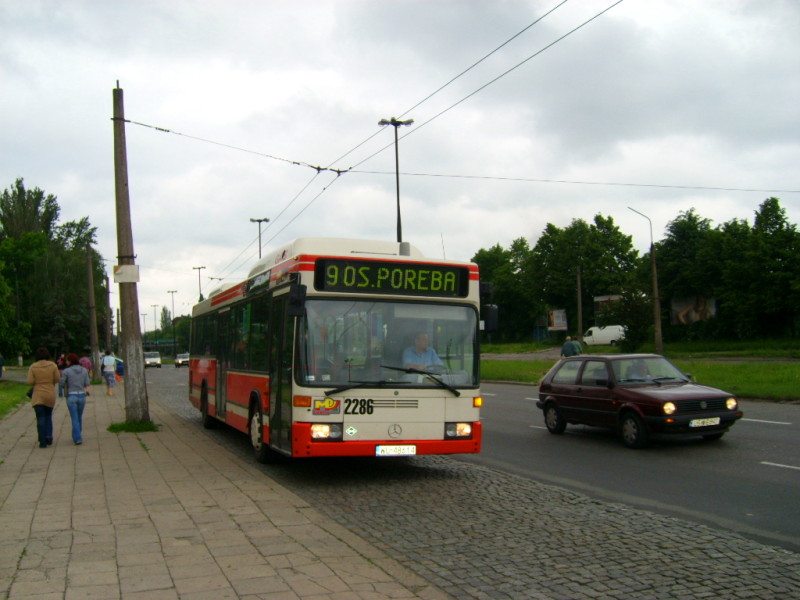 |
Mercedes-Benz O 405 NK
Number - 3 units.
Mercedes-Benz O 405 NK is a city bus, the production of which stopped in 1999. The vehicle was assembled by Mercedes-Benz, but it was distributed by EvoBus GmbH. At the end of the designation of the model appeared the letter “K” which means that it is a 10.5 m-long model classified as “midi”. The whole vehicle is low-floor. The doors were installed in 2-2-0 arrangement, which means the seats at the back of the bus are arranged as a U-shape, allowing more passengers to “get aboard”. Opposite the second door, to the right of the wheelchair space, two collapsible seats have been fitted.
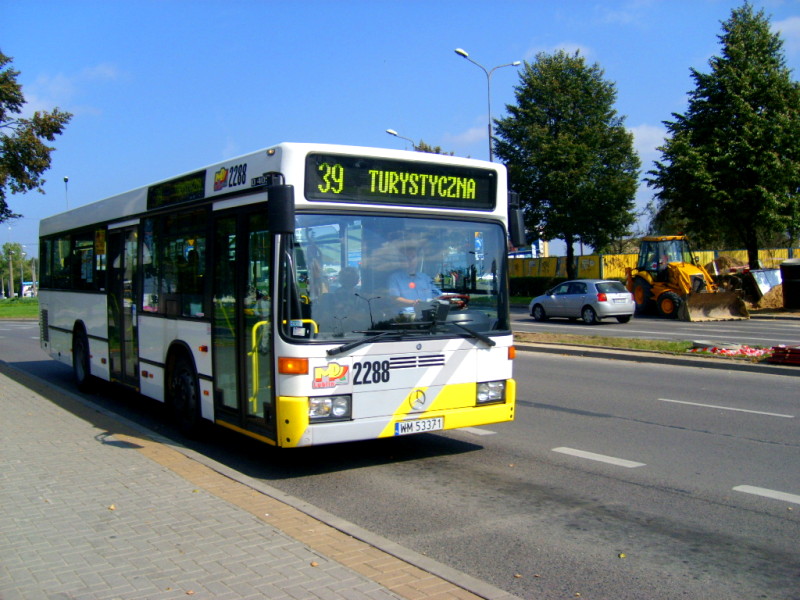 |
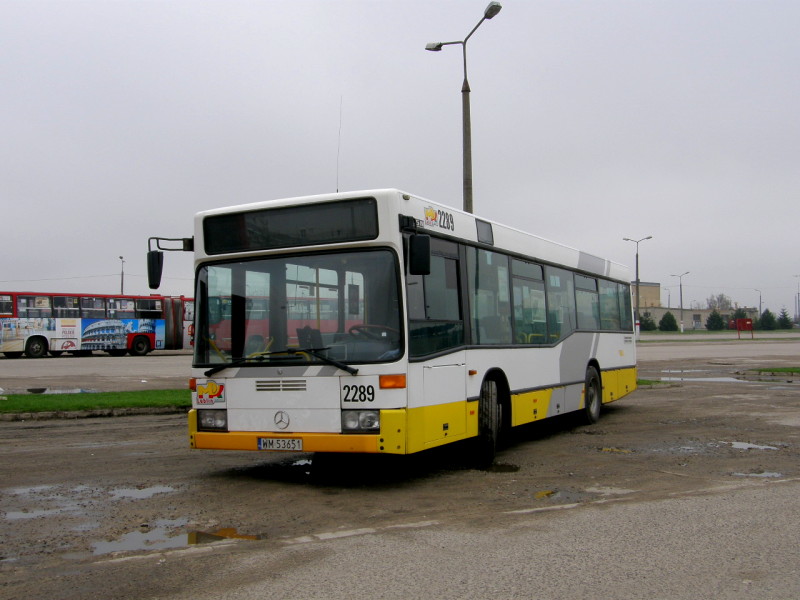 |
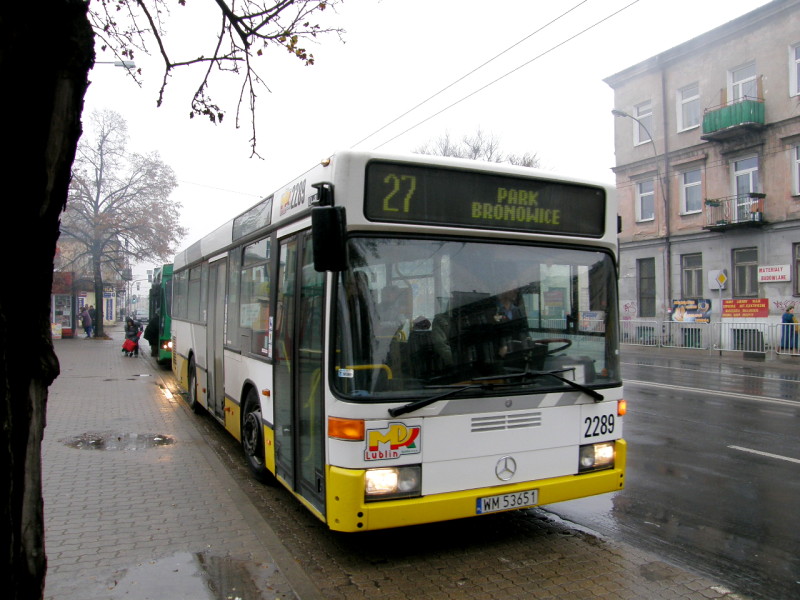 |
Mercedes-Benz 405 GN
Number - 1 unit.
Mercedes-Benz O 405G (the letter “G” stands for “an articulated bus”) is an articulated version of the O 405 model. The O 405 Mercedes family marked by their angular bodies entered production in 1984 and replaced the very popular city bus model O 305. At the turn of the 1980s and 1990s, in response to market demand, a low-floor version of the bus was developed, designated with the additional letter “N”. In the 1990s, a modified bus designated as O 405N2 was also introduced in the market. This series of buses had its state-of-the-art versions, i.e. O 405GNDE Mercedes-Benz being one of the first serial hybrid buses, and O 405N NEBUS Mercedes-Benz - the first bus powered by fuel cells, developed in 1997. In the 1990s Mercedes and Jelcz plant entered into partnership. The Mercedes-Benz O 405N assembled in the Polish plant was designated as Jelcz M122, and the articulated Mercedes-Benz O 405GN - as Jelcz M182. The close cooperation of both manufacturers was not long-lasting and the production stopped after assembling less than 100 vehicles. Their high durability and reliability combined with their comparatively moderate aftermarket price is what made the bus highly popular among public transport companies.
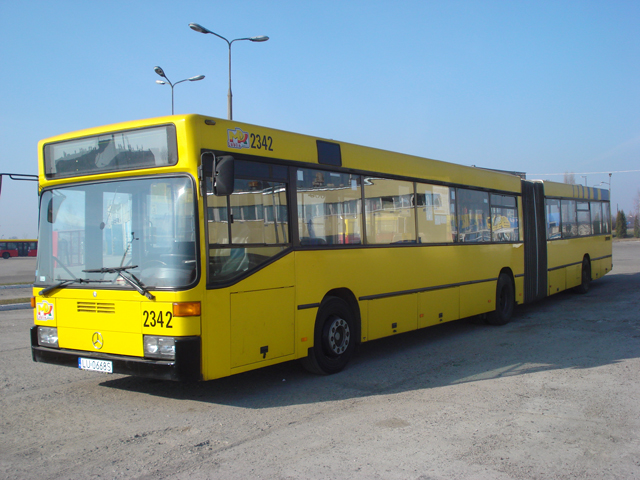 |
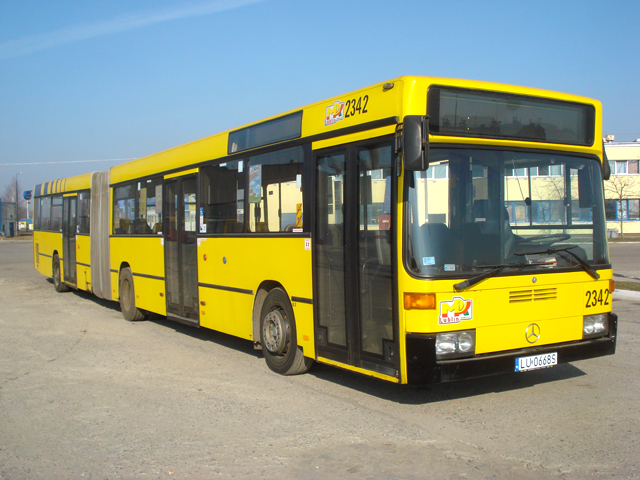 |
 |
Neoplan N4020
Number - 12 units.
Neoplan N4020 is a 15-metre long city bus manufactured between 1988 and 1999 by Gottlob Auwärter GmbH&Co plants. From 1996 to 1999 it was manufactured in Poland in Bolechowo near Poznań. Parts imported from Germany were used to assemble the vehicle. This bus introduced on the market a new length of 15 metres for operation. It was quite a challenge for design engineers to create such a long vehicle without resorting to articulation. Three axles were installed, where the front and rear ones are steering axles with single wheels. When the bus takes sharp turns, the rear axle is turned in the direction opposite to the front one however, at high speed it is blocked and does not turn. The vehicle’s power transmission is based on 260 HP MAN D0826 units installed on the rear overhang in a horizontal position. The bus is easily-recognisable owing to its elegant shape and a characteristic front wall with a divided wrap-around windscreen, square headlights with black rims. Owing to its large axle base, a considerable amount of space for seats, and a lot of standing room for passengers, was procured in the low-floor part. The floor slightly slopes up next to the second door. A small step was added in the third door.
 |
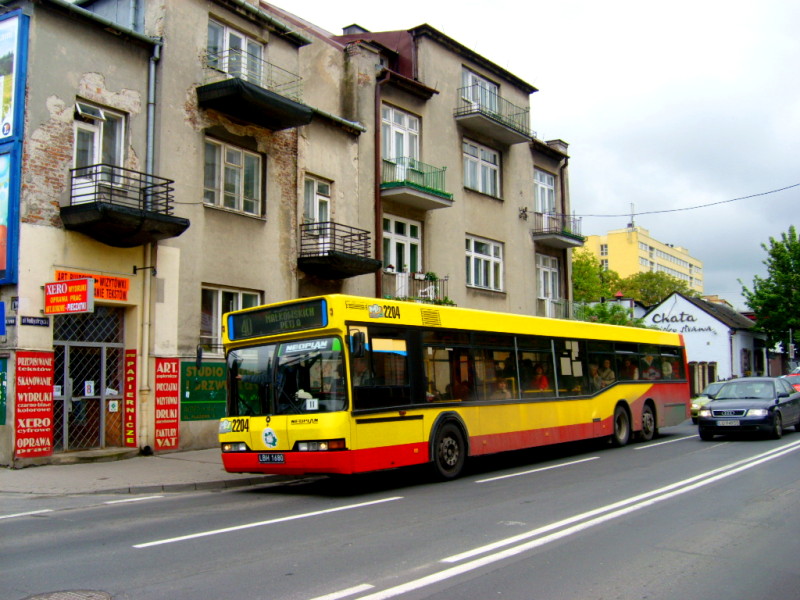 |
 |
Solaris Urbino 12
Number - 20 units.
Solaris Urbino 12 is a 12-metre long city bus designed by Polish engineers, in the production of which sub-assemblies of other manufacturers are used, with a significant number of them coming from Germany. The bus in 80% is manufactured with the use of adhesive technique. The production started in 1999 in Bolechowo near Poznań. The manufacture of the first generation stopped in 2002, the second generation was launched one year before and stopped in 2005, and the implementation of the third generation bus was started right away. Over the years, not many changes in the models could be observed. The buses are entirely low-floor. The increased width of these buses had a positive impact on the widening of the space between the seats, which allowed the transport of prams and wheelchairs from one door to another.
 |
 |
 |
Solaris Urbino 15
Number - 1 unit.
In the second half of the 1990s the Neoplan Polska company was strengthening its position on the Polish market. In 1999, when the production of the first modified version of Neoplan series K40xx was launched, the head office in Germany did not accept this. The Polish plant separated from it and formed a new company under the name “Solaris”. Solaris Urbino 15 is a bus that replaced the hereto popular Neoplan N4020td. The bus is entirely low-floor, adjusted particularly for the requirements of the Polish market. The vehicle is recognisable from afar. A row of headlights in silver frames and rounded roof edges is what makes up its characteristic shape. At the beginning the model was equipped with MAN D0826 LOH18 engines with a maximum power of 191kW (260 HP). Currently, they are fitted with DAF engines and Voith Diwa gearboxes, or – sometimes – Cammis engines with ZF gearboxes.
 |
 |
 |
back
- Tips for passengers
- Timetables
- Customer Service
Information on the operation
of public transport
tel. (81) 525-32-46

